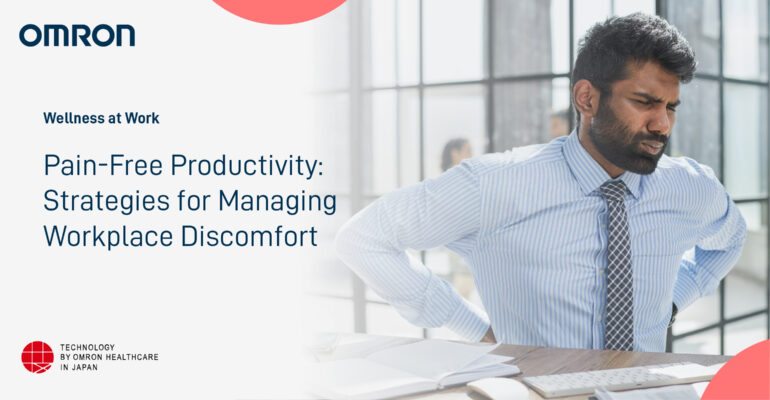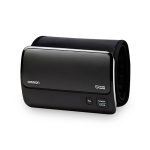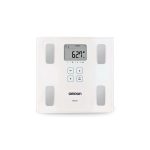Pain-Free Productivity: Strategies for Managing Workplace Discomfort
August 28, 2023 2024-01-22 15:52Pain-Free Productivity: Strategies for Managing Workplace Discomfort

Pain-Free Productivity: Strategies for Managing Workplace Discomfort
Many people place a high importance on productivity in the hectic workplace of today. But achieving productivity should never come at the expense of our health. Workplace discomfort, whether it’s due to prolonged sitting, poor ergonomics, or stress-related tension, can lead to a decline in both physical health and job performance.
This blog explores effective strategies to help you manage workplace discomfort, promoting a pain-free and productive work experience.
Common Challenges Contributing to Workplace Discomfort
- Poor Ergonomics: Incorrect workstation setup, including an uncomfortable chair, improper keyboard height, or a poorly positioned monitor, can lead to back pain, neck strain, and discomfort.
- Sedentary Lifestyle: Prolonged periods of sitting can result in stiffness, reduced circulation, and discomfort in the back, hips, and legs.
- Eyestrain: Extended screen time without proper breaks and inadequate lighting can cause eyestrain, headaches, and dry eyes.
- Stress and Mental Fatigue: High levels of stress and constant mental exertion can lead to tension, anxiety, and mental fatigue, contributing to overall discomfort.
- Inadequate Lighting: Poor lighting conditions, either too bright or too dim, can strain the eyes, leading to discomfort and difficulty focusing.
- Uncomfortable Attire: Wearing restrictive or uncomfortable clothing and footwear can cause physical discomfort throughout the day.
- Lack of Movement: Failing to incorporate regular movement and breaks can lead to muscle tension, stiffness, and aches, particularly in the neck, shoulders, and lower back.[1]
There are several things you can do to manage workplace discomfort and improve your productivity. Here are a few strategies.
Ergonomic Excellence
Creating a ergonomic workspace is essential for minimizing physical strain and discomfort. Adjust your chair and desk to promote proper posture—your feet should be flat on the ground, and your wrists should be parallel to the keyboard. Consider using ergonomic accessories such as lumbar supports, keyboard trays, and monitor stands. Regularly changing your sitting position and incorporating short stretching breaks can also prevent stiffness and tension.[2]
Prioritizing Movement
Sitting for extended periods can lead to a range of discomforts, including back pain and poor circulation. Incorporate movement into your workday by taking brief breaks for walks, stretching at your desk, or using a standing desk. These activities not only alleviate physical discomfort but also boost circulation and mental clarity, enhancing overall productivity.
Mindful Screen Time
Most jobs now require the use of a digital screen, yet they can cause eyestrain and headaches. Follow the 20-Every rule: every 20 minutes, take a 20-second break to focus on something 20 feet away. Additionally, adjust your screen’s brightness and contrast to reduce glare, and ensure your screen is at eye level to prevent neck strain.[3]
Stress Management
Stress is frequently associated with occupational discomfort and can increase health issues. Incorporate stress management techniques into your routine, such as deep breathing exercises, meditation, or short mindfulness sessions. Setting boundaries between work and personal time also prevents burnout and allows you to recharge, reducing stress-related discomfort.[4]
Proper Lighting
Good lighting is crucial to reduce eye strain and promote comfort. Position your workspace near natural light sources and use task lighting to illuminate your work area adequately. Avoid harsh fluorescent lighting, which can contribute to headaches and visual discomfort.
Stay Hydrated and Nourished
Dehydration and poor nutrition can amplify discomfort and reduce productivity. Keep a water bottle at your desk and set reminders to stay hydrated. Choose nutritious snacks that provide sustained energy levels to prevent energy crashes and discomfort associated with hunger.
Comfortable Attire
Wearing comfortable clothing and footwear is essential for workplace comfort. Choose clothing that allows for easy movement and doesn’t constrict your body. Comfortable shoes with proper arch support can prevent foot pain and discomfort.
Regular Breaks
Engaging in non-work-related activities during breaks can significantly reduce discomfort. Read a book, practice a hobby, or engage in a brief conversation with a coworker. Stepping away from your work tasks helps reset your mind and body, reducing strain and promoting a more comfortable work experience.[5]
Communication and Advocacy
Don’t hesitate to communicate your discomfort to your supervisor or HR department. They may be able to give additional resources or make changes to your workstation to improve your comfort. Advocating for your well-being is critical, whether it’s asking for an ergonomic chair or a more adjustable workstation.
Wrap-Up
Prioritizing your well-being while aiming for productivity is not only possible but also crucial for long-term success. By implementing these strategies to manage workplace discomfort, you can create a more comfortable and productive environment for yourself. Remember, a pain-free work experience contributes not only to your physical health but also to your overall job satisfaction and professional growth.
Reference:
- https://www.ncbi.nlm.nih.gov/pmc/articles/PMC9341230/
- https://www.mayoclinic.org/healthy-lifestyle/adult-health/in-depth/office-ergonomics/art-20046169
- https://www.medicalnewstoday.com/articles/321536#:~:text=Spending%20long%20periods%20looking%20at,remember%20to%20take%20frequent%20breaks.
- https://www.ncbi.nlm.nih.gov/pmc/articles/PMC6718215/
- https://www.apa.org/monitor/2019/01/break






